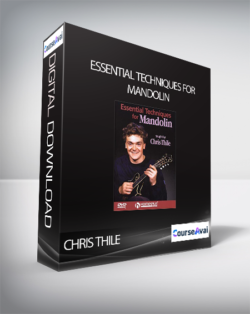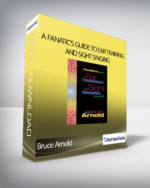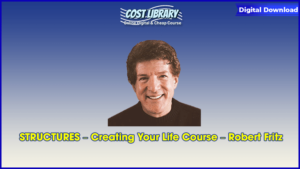File Format: (12mp3-1pdf)File Size: 55.74 MBDelivery: Digital DownloadPurchase Bruce Arnold – A FANATIC’S GUIDE TO EAR TRAINING AND SIGHT SINGING courses at here with PRICE $20 $10Bruce Arnold – A FANATIC’S GUIDE TO EAR TRAINING AND SIGHT SINGINGFanatic’s Guide to Ear Training and Sight Singing our best selling singing method.The idea of singing sound based on a “key center” as opposed to singing an “interval” really began a revolution in the way musicians perceive sound. When a seasoned musician sings a melody, they are not thinking the distance between each note they are hearing, they are singing pitches within a “key center.” Seasoned musicians sing this way naturally after years of playing and singing but with Fanatic’s Guide to Ear Training and Sight Singing a student can fast forward their learning so that they can experience 30 years of ear training in a fraction of the time.A complete transformation of musical perception with this ear training concept.You will see from reading the reviews that this system of ear training has changed many musicians’ careers. Even students that are just beginning with music have found that it completely transforms the way they hear and sing music.If you are only now acquainting yourself with this idea of “hearing within a key center” let’s look at a little history of ear training for musiciansThe “Interval” method of Ear Training has been taught in music schools for literally hundreds of years and rarely been questioned. This method is based on singing the distance between each note with no regard to a key center. The problem with this approach is pretty simple. It just doesn’t work when you are trying to sing a melody. Some of the most common problems with singing by interval are:A tendency to sing sharp or flatNot being able to find the first note of the melody when you start singing a song.Inability to maintain your own part when singing within groups or choirsIf you are experiencing any of these problems then you need to get Fanatic’s Guide to Ear Training and Sight Singing and start working towards hearing music based by “key center.”Why doesn’t interval training work?If you are trying to sing each note as it flows by in music, there is no way that you can calculate the distance between each note even at a slow tempo much less the usual speed that notes flow by in real time. The only way to instantly know what notes are being played is to ingrain in your mind the sound of each note within a key center so that you know the sounds you are singing in the same way that you see the color blue and know it’s blue.Our minds can’t process interval relationships at the speed needed to sing notes accurately.Maybe you have no problem in the classroom when the teacher plays a note and asks you to sing a Major 6th above it, but if you are trying to do this in time as you are actually singing a piece of real music, it becomes problematic, and the problem is compounded the more complicated the music becomes. In the real world, when music is being played in real time, as a musician, your mind just cannot calculate the intervals and analyze what you need to know in order to react properly right away. This isn’t about intellectual ability, it’s about the reality of TIME. So how do musicians identify the sounds they are singing instantaneously?Key Center is the “KEY”Here’s how they do it: They use the “key center” of a song and internalize the sound of all 12 notes within that key center. Quite simply when they sing the 3rd they are not thinking that the note is four half steps above the root or in relation to any other note –they are recognizing the sound of a 3rd because they have memorized that sound within a “key center.”Fanatic’s Guide to Ear Training and Sight Singing teaches you the “Key Center” processIn most cases we recommend you first work with Contextual Ear Training before moving on to Fanatic’s Guide to Ear Training and Sight Singing .By working with the audio files in the Contextual Ear Training over time, you gain the ability to sing the sound of all 12 notes within a “key center.” For some students this will be a quick and painless rebooting of the way they hear sound; for others it can be a frustrating path with many possible pitfalls.You have multiple singing method books. Which should I use first?Fanatic’s Guide to Ear Training and Sight Singing and Contextual Ear Training differences.Contextual Ear Training and Fanatic’s Guide to Ear Training and Sight Singing are two closely related books. The first and probably most important exercise for a beginner in the Fanatic’s Guide to Ear Training and Sight Singing is the “One Note” exercise. This “One Note” exercise develops the ability to instantly sing any of the 12 pitches over a “key center.” Fanatic’s Guide to Ear Training and Sight Singing requires you to work with a CD and check answers with an instrument to do this exercise. Contextual Ear Training allows you to do this exercise anywhere because the answer is supplied within the audio files, and it is much more portable. Therefore you will improve more quickly if you use the Contextual Ear Training “One Note” exercise because you can do it anywhere that you can take an MP3 player.Which book should I get or should I get both?We do occasionally recommend both Contextual Ear Training and Fanatic’s Guide to Ear Training and Sight Singing to students that are working in a choir or other places where they are reading music. With Contextual Ear Training you are not singing notes from a page. It will help you to sing notes from a page once you gain the ability to hear all 12 notes of a “key center,” but it does not build your sight reading skills. Fanatic’s Guide to Ear Training and Sight Singing does contain many exercises that require you to sing notes from a musical staff. So if you are a singer who needs to work on both aspects of your musicianship we recommend both books.Practicing Ear Training from two different perspectives is the best way to improve.With this in mind we have created a whole series of books that develop these two aspects of ear training. They basically boil down to listening exercises and singing exercises. For someone just starting our method we recommend: Contextual Ear Training and Ear Training One Note Complete.Fanatic’s Guide to Ear Training and Sight Singing and Ear Training One Note Complete together make a great ear training program.Listening exercises found in Ear Training One Note Complete teach you to identify the sounds from external sources such as another band member or a song that you are hearing on your MP3 player. Singing exercises found in Fanatic’s Guide to Ear Training and Sight Singing help you identify the sounds you hear inside you when you are singing, improvising or composing. You need both sides of ear training to become a great musician. The good news is they complement each other so the more you work on one, the more it will the help the other.Bruce Arnold is here to help you through the process.Some students can fly through this ear training with no problem. But many musicians have problems and need personal help. But have no fear, Mr. Arnold offers email support for students as they work through this process! So rest assured as you enter this ear training method, that you are not alone, and you can get expert help if you run into problems.Helping musician for almost two decades!This method has been transforming musicians for almost 20 years now. It’s one of the best selling Ear Training systems on the market. Simply put: It is successful because it works! BUT the secret weapon is Bruce Arnold. He is only an email away to help you. If you are a beginning or an advanced student seeking to perfect your skills, you can call on Bruce to help you through this process.Where should you start?First let’s talk about how you will be doing this ear training. We have found that the best way to do this ear training is with an MP3 player. It allows for many more ways to organize the audio files and is most portable. We do offer physical books and CDs with with some of our ear training products but we HIGHLY recommend you not take this path with our ear training method. Why? Because digital downloads are a much better way to study this ear training as MP3s are much less expensive, easier to organize, more easily portable and cost half as much as physical books with CDs. We also have many ear training products that are ONLY available as digital downloads so it just makes more sense to go the digital route. So unless you REALLY can only use a CD player we sincerely recommend that you buy digital downloads of our ear training products.Recommended order of books.For singing we most commonly recommend students start with Contextual Ear Training. and then move on to Fanatic’s Guide to Ear Training and Sight Singing . Also with Fanatic’s Guide to Sight Singing and Ear Training…we recommend you work with Ear Training One Note Complete.Where do I go after I finish Fanatic’s Guide to Ear Training and Sight Singing ?Once you have worked through the exercises in Fanatic’s Guide to Ear Training and Sight Singing we recommend you move on to Key Retention Builder.Sales PagePurchase Bruce Arnold – A FANATIC’S GUIDE TO EAR TRAINING AND SIGHT SINGING courses at here with PRICE $20 $10
 Chris Thile – Essential Techniques for Mandolin
₹1,660.00
Chris Thile – Essential Techniques for Mandolin
₹1,660.00
 Ahmed Saif – Content Creation 102
₹1,660.00
Ahmed Saif – Content Creation 102
₹1,660.00
Bruce Arnold – A FANATIC’S GUIDE TO EAR TRAINING AND SIGHT SINGING
₹1,660.00






